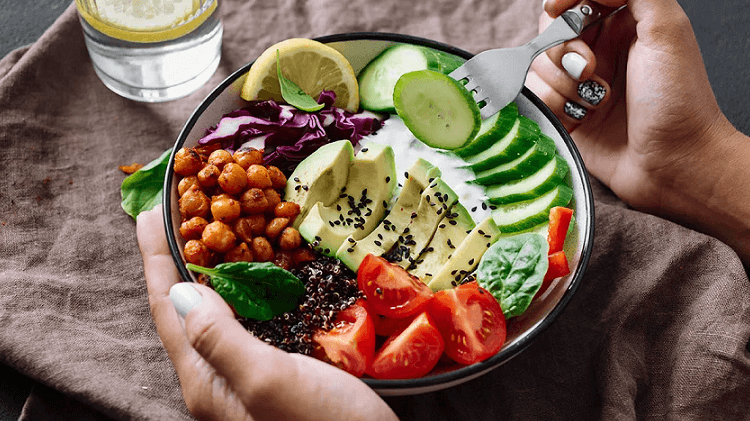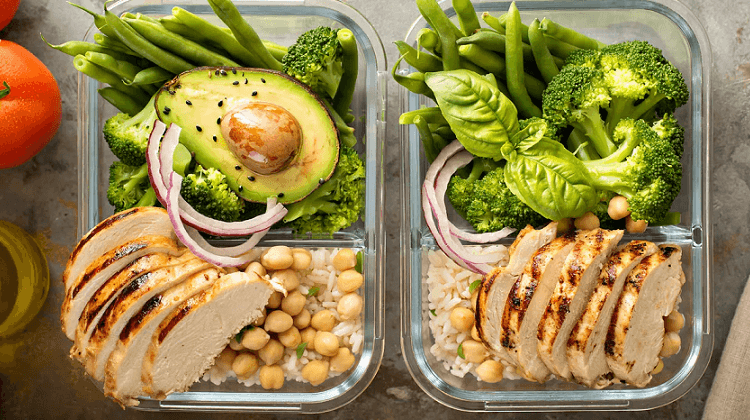Many bodybuilders seem to be more open than before in choosing a clean eating diet plan above all others. To be honest, a clean eating diet doesn’t just sound right to most people, but it also indicates a positive lifestyle choice that is generally acceptable to everyone.
In this clean eating diet plan guide, we explain the components of this diet including a breakdown of its fundamentals, and guidelines.
What is a Clean Diet Plan?
Just as the name suggests, a clean diet plan is made up entirely of natural, whole foods. In a clean diet plan, your primary focus should be the quality of your foods, meals, and snacks as opposed to the quantity – this is where the “clean” in the diet emanates from.
Typically, with this type of diet, you are less concerned about the calorie count of your macros but more concerned about the actual quality of your meals.

The Fundamental of any Clean Diet Plan
As mentioned already, the focus of a clean diet plan is to ensure that your daily meals consist of natural and whole foods.
To this end, the fundamentals of a clean diet plan are built on the avoidance of the following types of food;
Processed and Refined Foods
These include pastries like bread, cake, croissants, burgers, meat pies, sausages, doughnuts, and refined sugar.
Artificial Condiments
This consists of artificial seasoning, coloring, spices, flavoring and so on.
Alcoholic Beverages
All alcoholic beverages should be avoided during your clean eating diet and these include whiskey, brandy, gin, and beer.
Core Principles of a Clean Eating Diet Plan
In starting a clean eating diet plan, you need to know certain core principles that would guide you throughout your journey. As already mentioned, you should avoid processed, and refined foods while eating only natural, unprocessed, whole foods, meals, and snacks.
One of the key principles of a clean eating diet is an emphasis on food quality, as opposed to the quantity of food consumed. Whenever your focus is on the quality of your food intake, you are less bothered about calorie counting, as this is not a priority in the framework of a clean eating diet plan.
Let’s look at the other core principles of a clean eating diet plan.
#1. Flexibility in Meal Frequency and Timing
The beauty of a clean eating diet plan is that there are no dead-set meal frequency and timing to be bothered about. It is this flexibility in the number of your daily meals and when you have your meals that makes a clean eating diet program attractive to bodybuilders with a tight schedule.
Nevertheless, a typical clean-eating diet program would normally consist of between 5 to 6 meals daily. However, these meals are often in small amounts and can vary from full meals to clean snacks, smoothies, and healthy drinks.

#2. Strict Limitations and Restrictions on Meals
With a clean-eating diet program, you can not eat any food you like. As stated earlier, this diet plan places strict limitations and restrictions on meals. To this end, you should maintain a daily diet consisting of only natural, unprocessed, whole foods.
You should completely avoid consuming refined, processed foods and condiments. Foods and condiments like bread, cake, cereals, chips, crackers, pasta, dressings, spreads, and mustard should be excluded from your nutrition plan.
Also, alcoholic and non-alcoholic beverages should not be consumed when you run a clean eating diet program.
#3. No Exception to the Rule
There should be no exception to the rule when it comes to your clean-eating diet plan. You should not decide to treat yourself to treats like juice and soda, as this defeats the purpose of your clean-eating diet program.
To ensure that you stay true to the course, you can initiate phases where you test yourself to see if you can go the long haul.
You can start with a 14-day clean eating diet phase and then extend this to 30 days, followed by a 45-day clean eating diet phase and so on.
The idea is to build your confidence in refraining from processed and refined foods within that length of time while maintaining a diet of natural, unprocessed, whole foods.
#4. A Clean Eating Diet is for Everyone
Well, not really, but if you are a bodybuilder looking to gain substantial fat loss, muscle mass, and performance, then you might want to seriously consider trying out a clean-eating diet program.
A clean eating diet plan is ideal for anyone willing to maintain a restrictive diet and nutrition while at the same time keeping a diet rich in quality natural foods.
If you are someone who prefers counting calories and eating based on the quantity of food rather than the quality of foods consumed, you may find a clean eating diet plan somewhat difficult.
#5. The 90/10 and 80/20 Rules for Beginners
While anyone running a clean eating diet program should stay committed to a daily meal of natural, unprocessed, whole foods, this may be a difficult task for beginners and this is where a 90/10 or 80/20 rule can prove useful at first.
These rules are simple, you may eat clean for 90% of the day and indulge in processed treats for 10% of your day or you can eat clean for 80% daily and consume processed or refined foods for 20% of your daily meals.
The idea is to gradually reduce your consumption of refined or processed foods and increase your daily clean meals at the same time until you attain a 100% clean eating diet.

Conclusion
A clean eating diet is linked to improved health with a lower risk of type 2 diabetes, high blood pressure, stroke, cardiac arrest, and even sudden death.
By focusing purely on the quality of your food rather than the quantity, you would be able to gain muscle mass, lose fat, and improve your overall athletic performance as a bodybuilder.
So remember to steer clear of artificial condiments, refined or processed foods and beverages when running a clean eating diet plan. If you need more information about a clean eating diet and how it can be useful to your bodybuilding efforts, you should chat with an expert at Anabolic Coach for free today.


